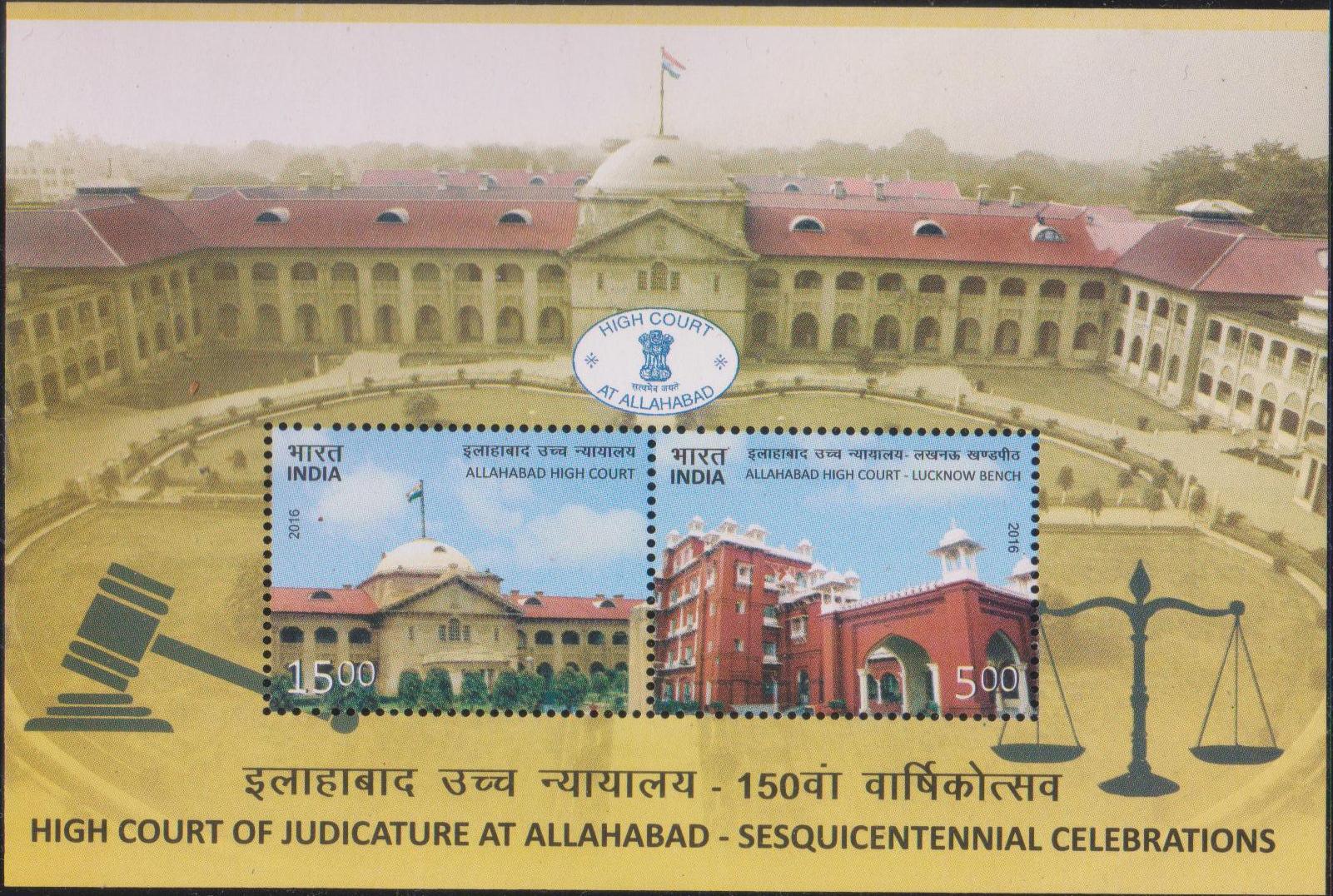
Allahabad High Court 2016
Complete set of 2 nos of commemorative postage stamp on the High Court of Judicature at Allahabad Sesquicentennial Celebrations :
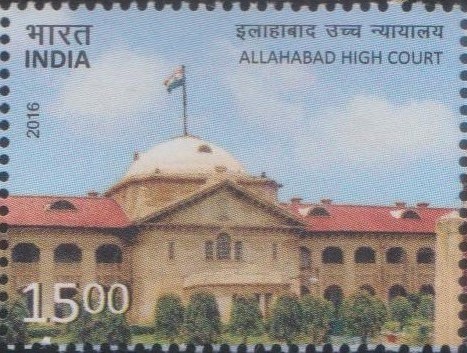
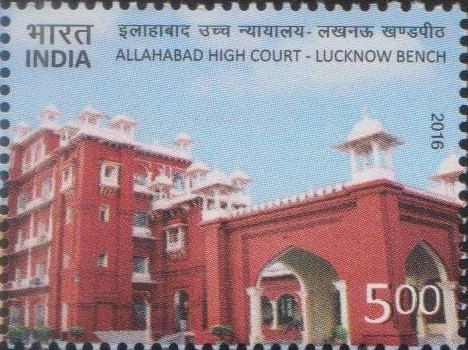
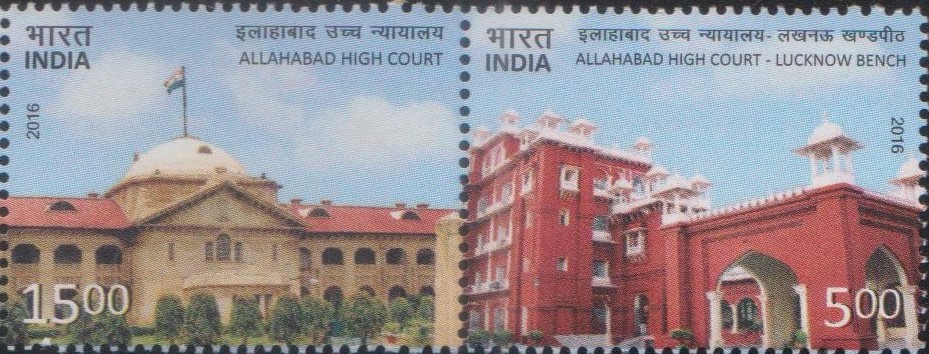
 Issued by India
Issued by India
Issued on Mar 13, 2016
Issued for : Now in the year 2016, the High Court of Judicature at Allahabad is celebrating its 150th Anniversary and the Department of Posts is pleased to issue a set of two Commemorative Stamps to mark this event.
Credit :
Stamp / Miniature Sheet / FDC / Cancellation Cachet : Smt. Nenu Gupta
Type : Se–tenant set of 2 Stamps, Miniature Sheet, Mint condition
Colour : Multi colour
Denomination : 1500 & 500 Paise
Stamps Printed : 0.4 million each
Miniature Sheet : 0.05 million
Printing Process : Wet Offset
Printer : Security Printing Press, Hyderabad
About :
- The High Court of Allahabad was established by a Royal Charter as the High Court of Judicature for the North Western Province on 17th March, 1866 and was seated at Agra. At that time, it was comprised of the First Chief Justice – Sir Walter Morgan and five other judges Alexander Ross, William Edwards, William Roberts, Francis Boyle Parson and Charles Arthur Turner.
- The High Court had its first sitting on 18.06.1866 at Agra. Thereafter, it was shifted to Allahabad in the year 1869 in the building on Queens’ Road now Sarojini Naidu Road. The building in which the High Court, Allahabad is seated at present was designed by the famous architect Frank Lishman. Its foundation stone was laid by Sir John Stanley KC., the then Chief Justice on 18.03.1911. The main building with dome shaped pedimented centre, engrailed arches, stone balustrades and arcaded wings is a marvelous synthesis of western and eastern architectural styles. The construction of the building was completed on 27.11.1916 and the building was inaugurated by Lord Chemsford, Viceroy & Governor General of India.
- The building in which the Lucknow Bench of High Court is located was designed by Mr. W. G. Wood, Executive Engineer. Its construction began in the year 1900 during the administration of Sir A. P. Macdonnel, the erstwhile Lt. Governor of United Province of Agra and Oudh. The building incorporates the best of Rajasthani and Mughal architecture with domes and pillars.
- The High Court got the new name of ‘High Court of Judicature at Allahabad‘ through a supplementary Letters Patent on 11.03.1919.
- On 26th July, 1948 the Chief Court of Oudh merged with High Court of Judicature at Allahabad under the United Provinces High Court (Amalgamation) Order, 1948.
- The High Court started functioning with 06 Judges and at present, when it is celebrating its 150th Anniversary, it has a sanctioned strength of 90 permanent and 70 additional Judges, a total 160 Judges, making it the biggest in the country.
- Starting from Sri Walter Morgan the First Chief Justice, Shri Shah Mohammad Suleman the First Indian Chief Justice and Shri Bidhu Bhushan Malik, the First Chief Justice after Independence, the High Court, Allahabad has witnessed 45 Chief Justice so far.
- The High Court of Allahabad has the distinction of having given the country five Chief Justices of India namely Sarvsshri K. N. Wanchoo, Mirza Hameedullah Beg, Raghunandan Swarup Pathak, Kamal Narain Singh and V. N. Khare.
- The Bar of the High Court in the beginning i.e. in 1866 consisted of 6 Advocates only but its population today is about 15000 as per the rolls maintained by the Registry of the High Court.
- Mr. William Jardin was the first Government advocate of North West Provinces appointed during 1869-70.
- The Advocates of the High Court at Principal Seat at Allahabad are grouped in two different recognized associations namely High Court Bar Association and Advocate’s Association. The Advocates at High Court, Lucknow Bench have their own recognized Bar Association in the name of Oudh Bar Association.
- At the time when the High Court shifted from Agra to Allahabad the Bar was composed of barristers of English and Irish Bar, the advocates of Scotland and Vakils. Mr. Ram Prasad, Mr. J. N. Chaudhary, Pt. Sundar Lal and Pt. Moti Lal Nehru were the first batch of the Vakils admitted to the status of advocates by the Chief Justice in 1896.
- The Allahabad High Court took the lead when other High Courts rejected applications for enrollment of women lawyers, by enrolling Miss. Cornelia Sorabji as the First Indian Lady Vakil of Allahabad High Court on August 24, 1921 by a decision of the English Committee of the court (as the Administrative Committee was then called) consisting of Chief Justice Sir Grimwood Mears. In 1995 a retiring room for lady Advocates was inaugurated and was named as Cornelia Sorabji Hall.
- The Registrar General is the Administrative Head of the High Court. He is assisted by several Officers & Officials collectively known as the Registry of the Court including Registrars, Joint Registrars, Dy. Registrars, Asst. Registrars, Section Officers, Review Officers, Asst. Review Officers and many others.
- The High Court both at Allahabad and its Lucknow Bench has a Chief Justice’s Library and a Judges Library with more than 1,75,000 Commentaries / Acts / Manuals / Reports / Digests, 1,20,000 bound volumes of Journals starting from the year 1901 till date, 5,000 bound volumes of Gazettes (Central & State), Law Reporters, Magazines and News Papers.
- The High Court has its own Museum both at Allahabad and Lucknow with a rich collection of judgements, deeds, photographs, dress, furniture and the original charter of Her Majesty the Queen Victoria of 17th March, 1866 by which the High Court was created and established.
- A Meditation & Reconciliation Centre has also been established in the High Court both at Allahabad & Lucknow for the Persons who are willing to resolve their disputes amicably by negotiations.
- The High Court is on its way to complete computerization. From the year 2009, the copies of Judgements & Orders are being uploaded on the internet immediately after their delivery. A mammoth task of digitalization of all the files has been undertaken by the High Court. The High Court is proposing to make its entire work paperless by adopting e-filing and also by running e-courts.
- The High Court celebrated its Centenary in the year 1966. The Post Centenary Silver Jubilee Function of the High Court was celebrated in the year 1991.
- Text : Based on the material received from proponent.


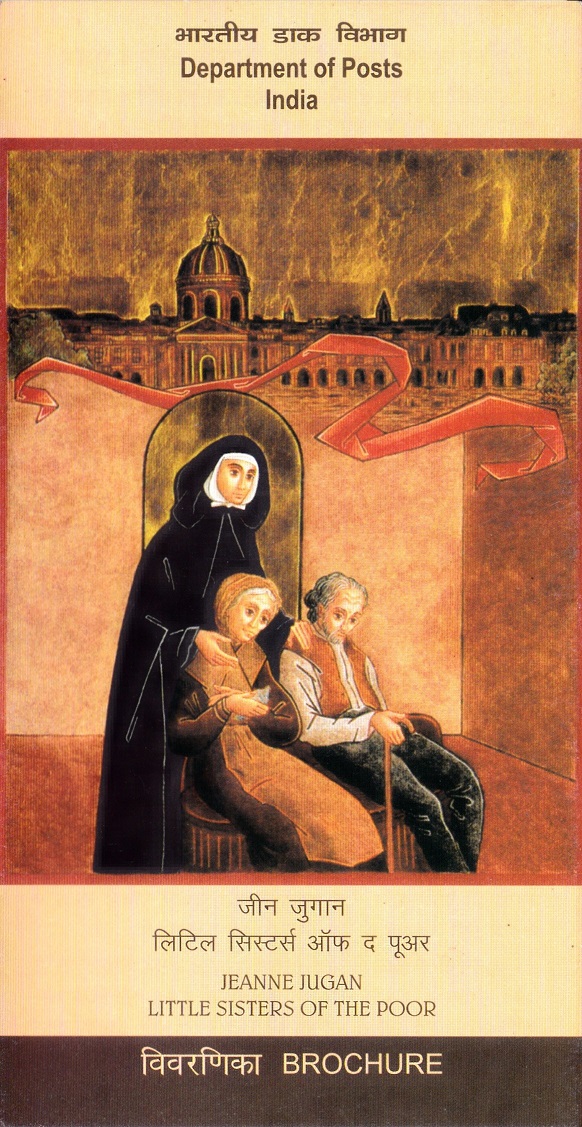

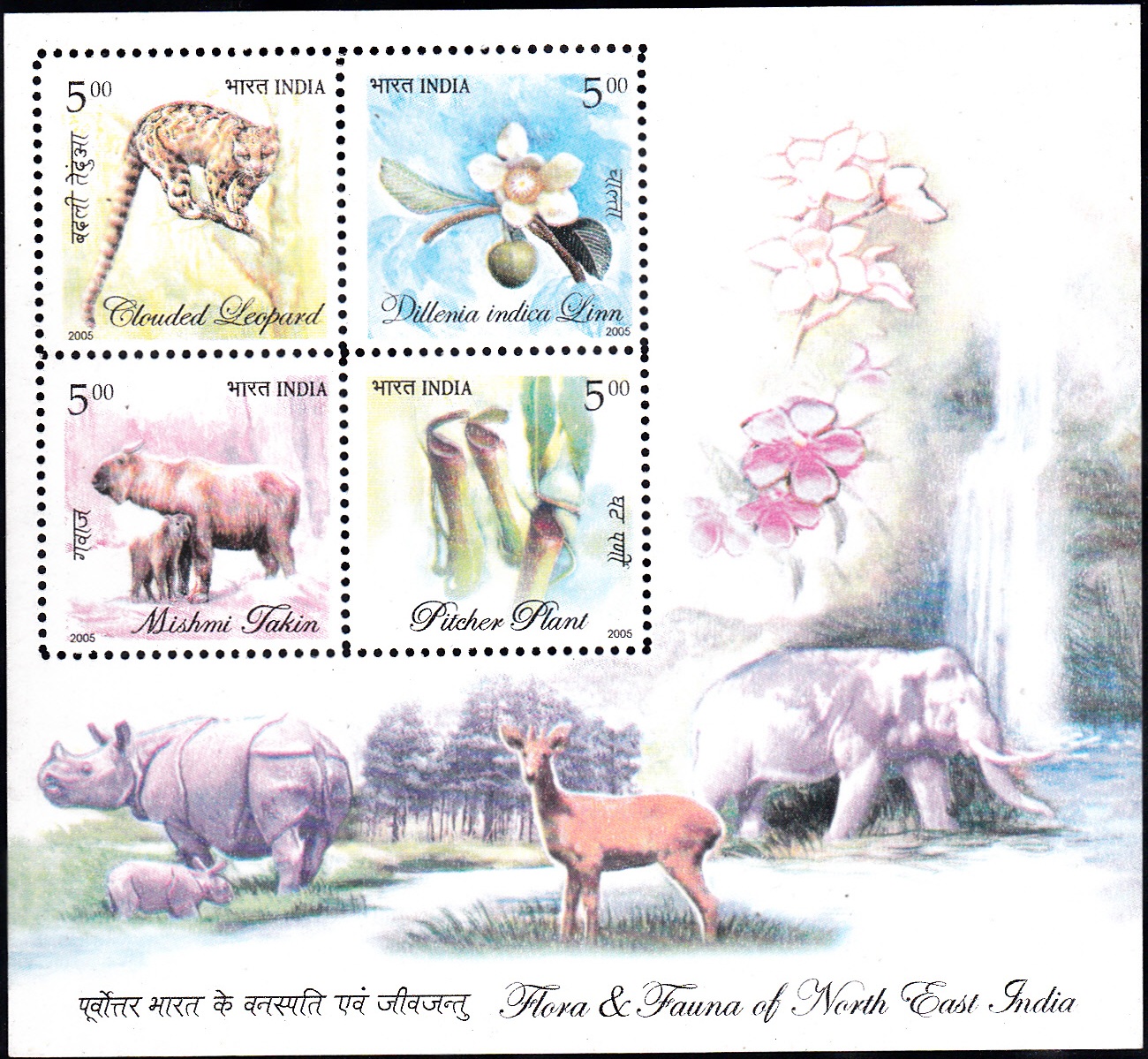

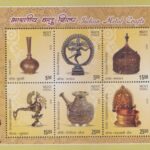

[…] Master’s Degree in History. He entered the legal profession in 1906 and joined the Bar of the Allahabad High Court in 1908 as the junior of Sir Tej Bahadur Sapru. For some time, he worked as the Law Minister of the […]
[…] Satish Chandra Banerjee and others. He defended the accused in the Meerut Conspiracy case in the Allahabad High Court in 1933 and later the military officers accused at the INA trial at Red Fort in Delhi. Dr. Katju […]